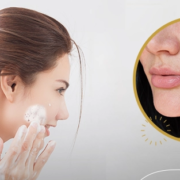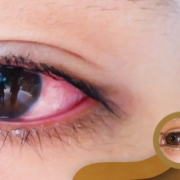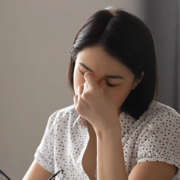Minimizing Pores: Causes & Treatments
Enlarged pores are more common than you may think. They affect both men and women of all ages.
Pores are the small openings at the top of our hair follicles that cover the entire body. Our pores release sebum, our body’s natural oil, to naturally moisturize our skin to help keep it supple. Although large pores can be frustrating, pores are necessary for maintaining healthy skin.
Usually, genetics determine larger pores. But, oily skin, sun damage and aging can be other factors that make your pores look bigger.
While you can’t change the size of your pores, you can minimize the appearance of enlarged pores. Read on to learn the proper steps to take to minimize pores.
WHAT CAUSES ENLARGED PORES
GENETICS
Your genes are the greatest determining factor in your pore size. People with large pores often have family members with large pores.
AGE
As you grow older, your skin loses it elasticity, which causes your skin to stretch and sag, making pores appear larger. Your skin also thickens as you age, which causes miniscule skin cells to gather around your pores, making pores look bigger.
SUN DAMAGE
Years of sun exposure can make pores appear larger. Sun damage can thicken the skin, which leads to bigger pores. Prolonged sun exposure can also remove collagen, elastin and water from your skin, which causes the tissue beneath your skin to shrink and pull at the edges of your pores, making them sag and look bigger.
CLOGGED PORES
An excess amount of oil and dead skin cells gathering in your pores can cause pores to appear larger than usual.
HOW TO MINIMIZE PORES AT HOME
WASH YOUR FACE DAILY
Washing your face daily removes dirt, oil and other unwanted debris, which usually lead to clogged pores. It is best to choose a cleanser that matches your skin type — acne, combo, dry, normal, oily, and sensitive. If you have oily skin, salicylic acid cleanser work to reduce oil and pores as opposed to dry skin alpha hydroxy acid cleansers help moisturize while exfoliating and reducing pores.
USE MASKS WEEKLY
Clay masks absorb oil and restore a natural looking glow.
An example of clay is kaolin, a natural clay that is added in skin formulations to help draw out excess sebum (oil) from the skin while gently exfoliating. This results in smaller looking pores.
Clay masks can be combined with other ingredients to best fit your skin concerns. For example, sulfur a natural antibacterial can fight acne, charcoal powder draws up oil, Vitamin E micro beads to replenish skin moisture, and pumpkin enzymes to help regenerate skin and refine pore size. To avoid skin irritation, masks should not be used more than twice a week. We offer different masks and scrubs to fit your skin type — acne, combo, dry, normal, oily and sensitive.
EXFOLIATE
Exfoliation is the removal of dead skin cells from the upper skin layer. Exfoliation brightens skin as well as leaves you with a smoother texture.
If you are routinely removing the dead skin cells that clog your pores, your pores won’t stretch out and look larger.
There are two types of exfoliants:
Physical Exfoliators: This is a cleanser that has tiny scrubbing particles that you can feel with your hands. Usually labeled as face scrubs, these granule-filled formulas help to buff and slough all the dead skin cells off of the surface of your face.
Chemical Exfoliators: Chemical exfoliants have two subcategories, AHAs and BHAs:
Alpha Hydroxy Acids are mostly derived from natural ingredients, glycolic acid from sugar cane, lactic acid from milk, malic acid from apples, citric acid from citrus and tartaric acid from grapes. These acids are water soluble and capable of enhancing our skin’s natural moisture levels, decreasing the look of wrinkles and fine lines, smoothing rough skin texture and improving dull, uneven skin tone. Beta Hydroxy Acids usually refer to salicylic acid. BHAs are similar to AHAs but work more deeply within our skin, inside the lining of our pores. They are also oil soluble, meaning they are ideal for oily skin. They are also a great ingredient for calming red skin, even those who have rosacea.
You do not want to over exfoliate your skin though. This can strip the skin’s protective barrier and result in dehydrated and inflamed skin. If this occurs, decrease the frequency, strength or type of exfoliation.
Choose the exfoliator that fits your skin type – acne, combo, dry, oily, normal, oily, sensitive.
MOISTURIZE DAILY
Moisturizing your skin everyday can reduce the chance of developing dry or oily skin — both which can cause acne.
The best moisturizers for enlarged pores should complement your skin type. Choose the moisturizer that best fits your skin type.
USE COLLAGEN PRODUCING PRODUCTS
Retinol is a type of vitamin A that makes pores smaller by increasing cell turnover unclogging pores.
Vitamin C is an antioxidant that boosts collagen production in addition to protecting for photodamage which causes enlarged pores.
Glycolic Acid is an alpha hydroxy acid that helps regenerate collagen as well exfoliates dead skin.
USE SUNSCREEN
Sunscreen is a must. Constant sun exposure will result in pores that will begin to stretch and sag around the edges, which makes them look bigger. For everyday sunscreen use, view our products here.
Read our in-depth blog about the differences between sunscreen and sunblock here.
IN-CLINIC PROCEDURES TO MINIMIZE PORES
At Shinagawa Aesthetics, we offer many different in-office procedures that can help minimize your pores. These options include laser treatments, among others.
Let us help treat your enlarged pores so that you can feel comfortable again in your own skin.
Call our Patient Care Lines: (+632) 7-368 5238 l (+63) 917 862 7454 l (+63) 921 217 0517 for inquiries, questions, and appointments or talk to our consultants via LiveChat at https://shinagawa.ph so we can address and answer them for you.






